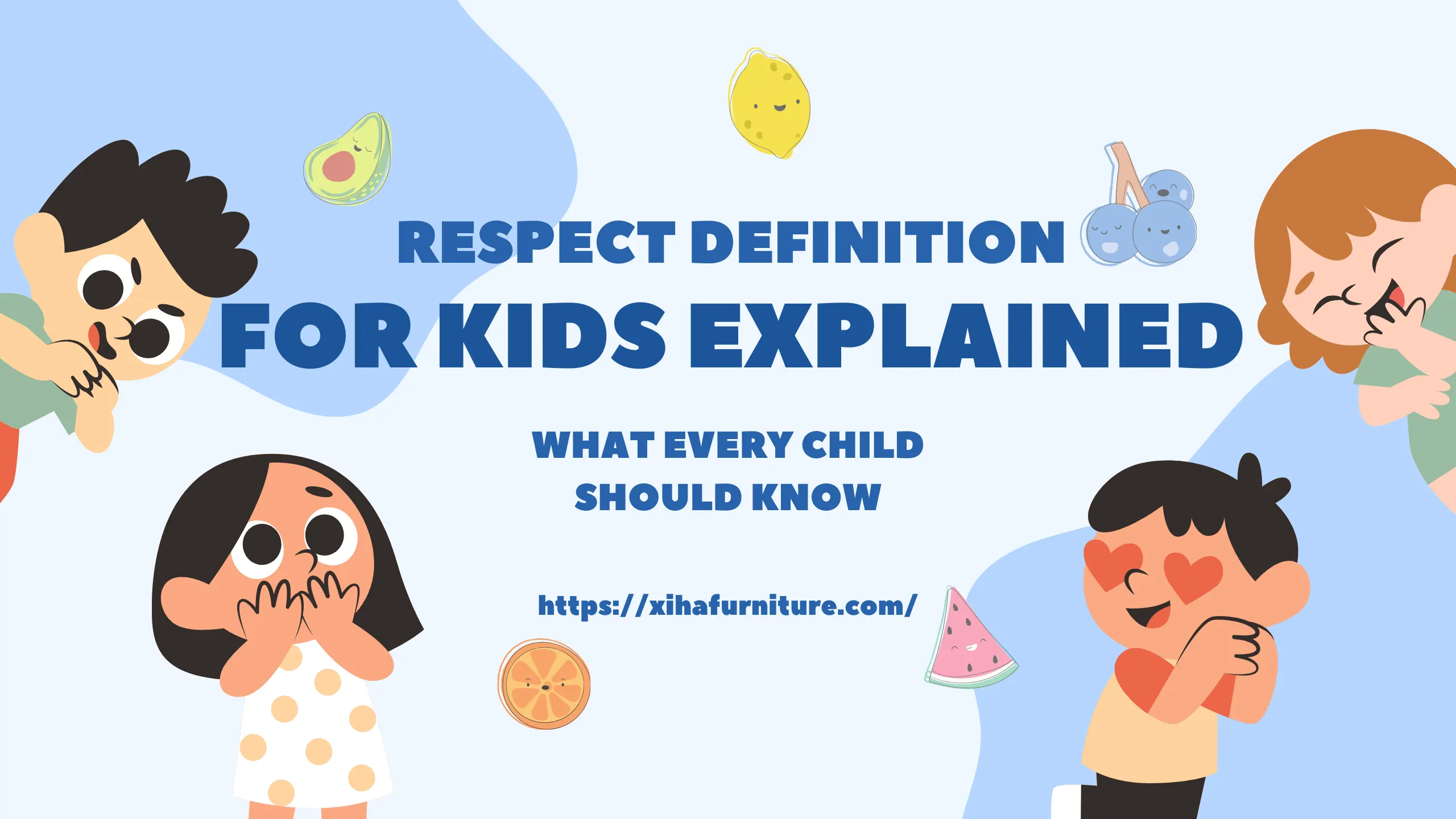Respect. Adults bring it up all the time, but let’s be real, most kids are left thinking, “Okay… but what does that mean?” Maybe they hear, “Respect your elders” or “Show respect in class,” yet the idea feels fuzzy. The truth is, the Respect Definition for Kids isn’t always explained in clear, kid-friendly words.
Here’s the real issue: if children don’t understand the Respect Definition for Kids, they may struggle to make friends, handle conflicts, or listen to teachers. Simple things like interrupting, grabbing toys, or rolling their eyes show a lack of respect, and without learning what respect means in daily life, kids miss out on one of the most important skills for growing up kind and confident.
In this article, we’ll break down the Respect Definition for Kids and explain it in ways that make sense. We’ll show children how respect plays a role in friendships, family life, school, and even how they treat themselves. With easy tips and real-life scenarios, this guide makes learning about respect simple, fun, and super practical.
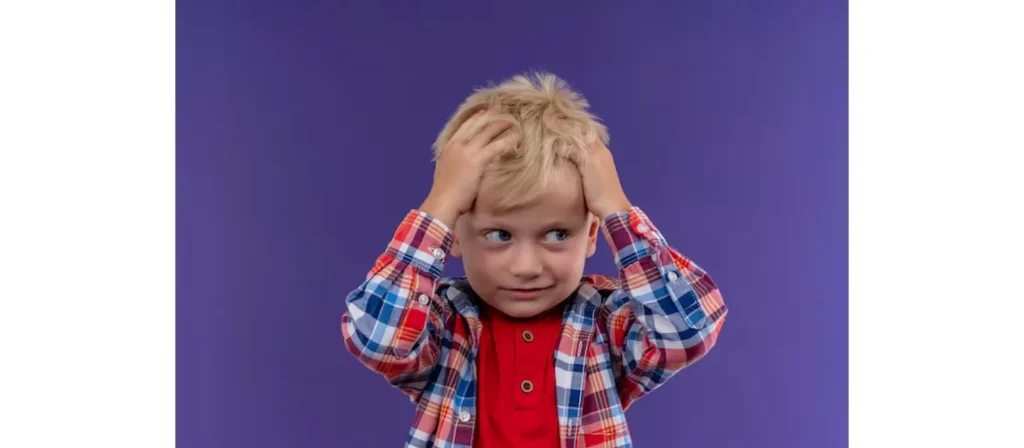
What is Respect?
Respect means treating people and yourself with kindness, fairness, and care. It’s the way we show others that they matter, and it’s one of the most important values children can learn as they grow. The Respect Definition for Kids is not just about rules, but about actions that show kindness every day.
At its core, respect is about recognizing that every person has feelings, needs, and rights. It’s not just about being polite or following the rules. It’s about understanding that others deserve to feel safe, heard, and appreciated, just like we do. This understanding turns the Respect Definition for Kids into something children can actually use in their daily lives.
To help children fully understand what respect means, we can look at three key ideas that make this concept easier to grasp:
(a) Respect is something that goes both ways.
It’s not only about how we treat others, it’s also about how we expect to be treated. When kids learn that giving respect often leads to receiving respect, they begin to see it as a tool for building strong friendships and healthy relationships. It also teaches them about self-respect, which means knowing their own worth and setting boundaries when needed.
(b) Respect shows up in everyday actions.
Children don’t need grand gestures to show respect. Simple things like waiting for their turn, listening without interrupting, sharing with others, or cleaning up after themselves all count. These small choices reflect a big message: “I care about you and what matters to you.”
(c) Respect begins with empathy.
One of the easiest ways to teach respect is to help children imagine how someone else might feel in a situation. When a child thinks, “How would I feel if that happened to me?” it naturally leads to more caring behavior. Empathy helps transform respect from a rule into a habit that comes from the heart.
By breaking respect down into these simple parts such as mutual treatment, daily behavior, and empathy, we help children see it as something real and reachable. With this clear understanding of what respect is, they are ready to move forward and learn how to practice it in everyday situations.
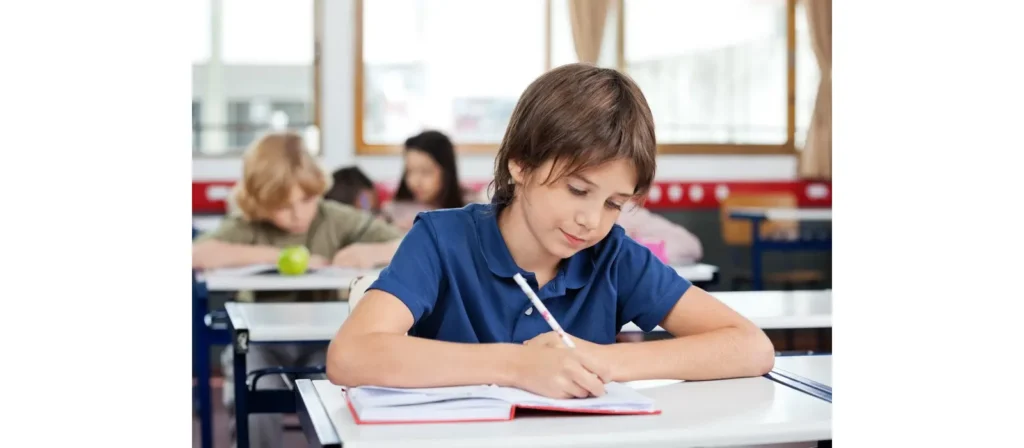
What does it mean to show respect?
Understanding the respect definition for kids isn’t just about memorizing words. It’s about seeing what respect looks like in daily life. When we define respect for kids, we explain that it means showing care, fairness, and kindness in simple actions. A kid friendly definition of respect helps children connect the word with what they actually do every day. So, what is respect for kids in practice? Here are some clear and relatable respect definition for kids examples:
- Listening patiently – A child waits for their turn to speak instead of interrupting. This is a simple way to live out the kids definition of respect.
- Using polite words – Saying “please” and “thank you” shows kindness and fits the definition of respectful for kids.
- Respecting boundaries – Accepting “no” or giving personal space demonstrates that a child understands the definition of respect for kids in action.
- Sharing and taking turns – Waiting for the blue crayon instead of grabbing it reflects fairness, a key part of the respect meaning for kids.
- Helping others – Offering a hand when a friend struggles links directly to the kid definition of respect as caring for others.
- Apologizing for mistakes – Saying “I’m sorry” and making it right is a clear example of the respectful definition for kids.
- Following class routines – Cleaning up after playtime shows responsibility, reinforcing the definition for respect for kids in community life.
- Including everyone – Inviting others to join a game explains how to explain respect to a child: it’s about kindness and fairness in action.
- Appreciating differences – Listening to cultural stories or trying new foods is a respect definition for kids example that shows curiosity without judgment.
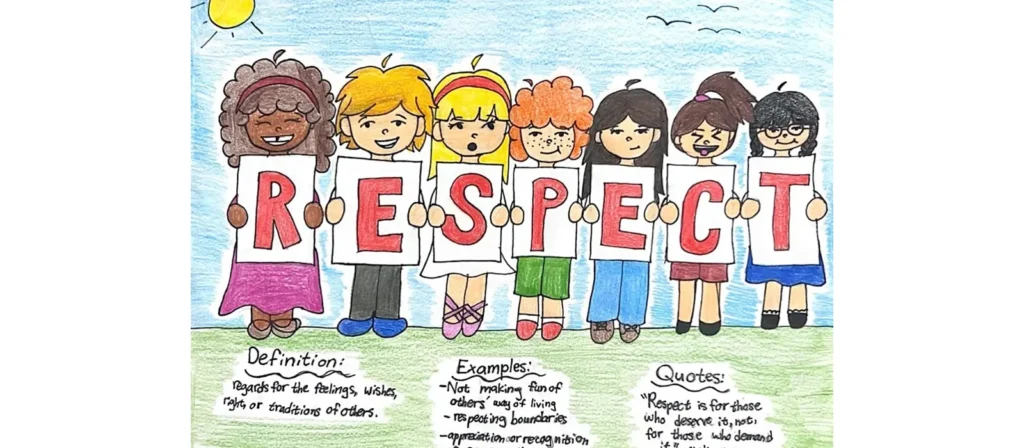
So, what does respect mean for kids? It’s not about big rules or complicated ideas—it’s about small, everyday choices that show others they matter. With a clear respect for kids definition, children can practice respect naturally at school, at home, and with friends.to learn.
Why is respect important?
Understanding the respect definition for kids helps them connect the idea with their emotions, friendships, and school experiences. Here’s why teaching respect early is so important:
Respect supports emotional development
Respect helps children recognize emotions, both their own and those of others, and respond to them with care. When young children learn to listen, wait, and use polite words, they begin to develop emotional awareness and empathy. These actions form the early stages of self-regulation, helping them pause before reacting and consider how their behavior affects those around them. For preschool educators, offering a clear and consistent definition of respectful for kids supports emotional growth in daily classroom interactions.
Respect helps build strong peer relationships
Children who understand what respect means are more likely to form positive, cooperative relationships with peers. Actions such as sharing, taking turns, and using kind language show others that they are valued, which encourages mutual trust and friendship. Teaching the respect definition for kids through modeling and reinforcement gives children the tools to resolve conflict peacefully and maintain healthy social connections as they grow.
Respect creates a safe and positive classroom environment
A classroom where respect is taught, modeled, and expected becomes a space where every child feels safe, seen, and supported. When children know their ideas, bodies, and belongings will be treated with care, they become more confident and cooperative. Using a consistent kid friendly definition of respect as part of daily routines builds a strong foundation for group learning, emotional security, and social harmony.
Respect improves listening, patience, and self-control
Respectful behavior naturally strengthens a child’s ability to listen, wait their turn, and manage frustration, skills that are essential for functioning in a group. When children understand that respect includes staying quiet while someone else is talking or responding calmly to limits, they practice regulating their impulses. Defining respect for kids within these moments gives them a clear framework for behavior they can repeat and rely on.
Respect lays the foundation for long-term social success
Respect is one of the most essential building blocks of lifelong social development. Children who internalize respectful behavior, such as resolving disagreements calmly or including others, are better prepared for school, friendships, and future workplaces. Educators who consistently explain what respect means for kids and acknowledge respectful moments in real time help children grow into kind, thoughtful individuals who contribute positively to their communities.
Teaching kids respect goes far beyond polite words. When children truly understand what respect means, they learn empathy, cooperation, and confidence. Respect shapes how they manage emotions, build friendships, and feel safe in a classroom. By giving children a clear, practical definition of respect, parents and teachers provide a foundation that will support them not only in school, but throughout life.
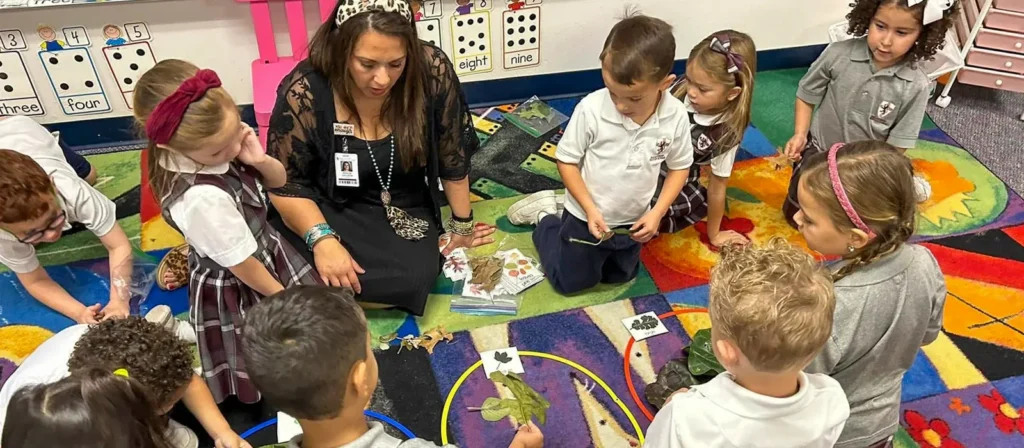
Skills for teaching respect
Helping children understand the respect definition for kids requires more than a single lesson. It’s about consistent modeling, clear communication, and daily practice. Below are practical strategies educators and parents can use to make the definition of respect for kids real and relatable.
Model respectful behavior consistently
Children learn by watching. When adults use kind language, listen attentively, and remain calm during stress or disagreement, they demonstrate what respect looks like in action. Every interaction, whether greeting a child by name, waiting patiently, or apologizing sincerely, serves as a living definition of respect for kids that children can imitate.
Use explicit discussion and clear feedback
Respect should be talked about openly. Discuss what respect means in different situations, explain why it matters, and connect it to relationships. Instead of saying “be respectful,” give specific feedback such as “Thank you for waiting quietly” or “I appreciate that you shared your toy.” These examples link the respect definition for kids to everyday actions they can recognize and repeat.
Teach active listening
Active listening helps children grasp the heart of respect. Encourage them to focus on the speaker, ask clarifying questions, and repeat back what they heard. This practice not only reinforces patience but also strengthens their understanding of the kid friendly definition of respect, valuing another person’s voice.
Develop empathy through role-play
Empathy is central to any definition of respect for kids. Use role-playing activities to let children step into someone else’s shoes, for example acting out scenarios about sharing, taking turns, or resolving conflicts. Asking questions like “How would you feel if that happened to you?” transforms respect from a rule into a natural habit.
Teach conflict resolution skills
Disagreements are inevitable, but children can learn to handle them respectfully. Guide them to express their needs calmly, listen to others, and work toward fair solutions. This approach helps children see that the respect definition for kids also applies during challenges, not just in easy moments.
Build self-awareness and responsibility
Respect begins with knowing yourself. Help children notice their own feelings, biases, and reactions, and how these affect others. When they apologize, take responsibility for mistakes, or correct their actions, they internalize the respectful definition for kids as accountability and fairness.
Embed respect into routines and expectations
Classroom routines and family rules are natural places to reinforce respect. Turn-taking games, clean-up time, and group projects all provide daily practice. Establish clear expectations for respectful behavior, such as using polite words and waiting patiently, and address disrespect calmly when it occurs. Consistency ensures the definition respect for kids becomes part of the culture.
Use positive reinforcement
When children demonstrate respectful choices, acknowledge them immediately. Saying “I noticed you helped your friend” or “That was very thoughtful” connects actions to meaning. This recognition not only motivates children but also gives them a practical, lived version of the respect for kids definition.
Encourage peer recognition and group reflection
Respect grows stronger when children celebrate it together. Activities such as kindness circles, end-of-day reflections, or group discussions help children define respect for themselves and recognize it in their peers. This builds a community where the definition of respect for kids is understood, practiced, and valued by everyone.
Tips for Parents: Teaching Respect at Home
- Model respect daily – Use polite words like please and thank you, even with your child.
- Explain the why – When setting limits, add a quick reason: “We take turns so everyone feels included.”
- Praise respectful moments – Say, “I like how you waited patiently” to connect behavior with meaning.
- Set clear routines – Consistency in chores, greetings, or family rules reinforces the definition of respect for kids naturally.
Signs of disrespect
While young children may not intend to be unkind, certain behaviors signal a lack of social awareness and offer important opportunities for teaching. Educators should be attentive to these signs and use them to reinforce the Respect Definition for Kids, guiding children toward better choices and stronger peer relationships.
Below are common signs of disrespect in preschool environments:
- Interrupting or speaking over others
A child who consistently talks while someone else is speaking may not yet understand the importance of listening. This behavior disrupts communication and shows a need for modeling patient turn-taking. - Ignoring classroom rules or routines
Disregarding established expectations such as cleanup time, circle-time procedures, or sharing rules can reflect a lack of awareness or resistance to community norms. These actions offer chances to re-teach the respect meaning for kids in daily life. - Refusing to take turns or share materials
When children grab, hoard, or say “Mine!” during group activities, it signals a struggle with social fairness. Teachers can use these moments to define respect for kids in terms of mutual enjoyment and fairness. - Using unkind or exclusive language
Phrases like “You can’t sit here” or mimicking others in a hurtful way, even playfully, indicate a lack of empathy. These moments can be redirected by explaining how words affect others and encouraging inclusive speech. - Touching others without permission
Grabbing toys, pushing in line, or hugging without asking can violate personal boundaries. These behaviors provide opportunities to teach physical respect and the importance of asking first. - Ignoring adult guidance or refusing to respond
When a child avoids eye contact, walks away, or refuses to follow simple requests, it may reflect a challenge with authority or emotional regulation. Addressing this calmly helps the child reconnect with respectful behavior. - Withdrawing or isolating from group activities
While not always disrespectful, repeated non-participation can signal emotional discomfort or social confusion. In such cases, respectful engagement may need to be taught through modeling and encouragement.
Recognizing these behaviors not as defiance but as signals of learning gaps allows educators to respond constructively. Each incident becomes a chance to clarify what respect means for kids and reinforce the classroom’s shared values through consistent, gentle correction.

FAQs
What activities do schools use to teach respect?
Preschools often use group games, role-playing, and storytelling to help children understand respectful behavior. Activities like turn-taking games, compliment circles, and classroom jobs encourage children to practice kindness, patience, and cooperation. These hands-on experiences help define respect for kids in practical, relatable ways.
What are the “Three Principles of Respect”?
The three core principles of respect are: respect for others, respect for property, and respect for self. These principles help children learn how to treat people kindly, care for shared items, and make safe, responsible choices for themselves.
How do you explain respect to a child in simple words?
The easiest way to define respect for kids is: “Respect means treating others the way you would like to be treated.” This kid friendly definition of respect uses simple language that children can remember and apply.
Why is respect important for kids at school?
Respect makes classrooms safe and fair. When children understand the definition of respectful for kids, they learn to listen, share, and include others. This builds friendships and helps everyone feel valued.
Conclusion
Teaching children about respect is more than asking them to say “please” or “thank you.” It’s about helping them understand why kindness, fairness, and empathy matter in every interaction. A clear Respect Definition for Kids gives children the tools to build strong friendships, cooperate in class, and grow into confident, caring individuals.
By modeling respectful behavior, embedding it into routines, and recognizing it when it happens, parents and educators turn respect from an abstract idea into a daily habit. With a practical Respect Definition for Kids guiding them, children learn not only how to treat others well but also how to value themselves. And that is the foundation for a safe, supportive, and successful future.

